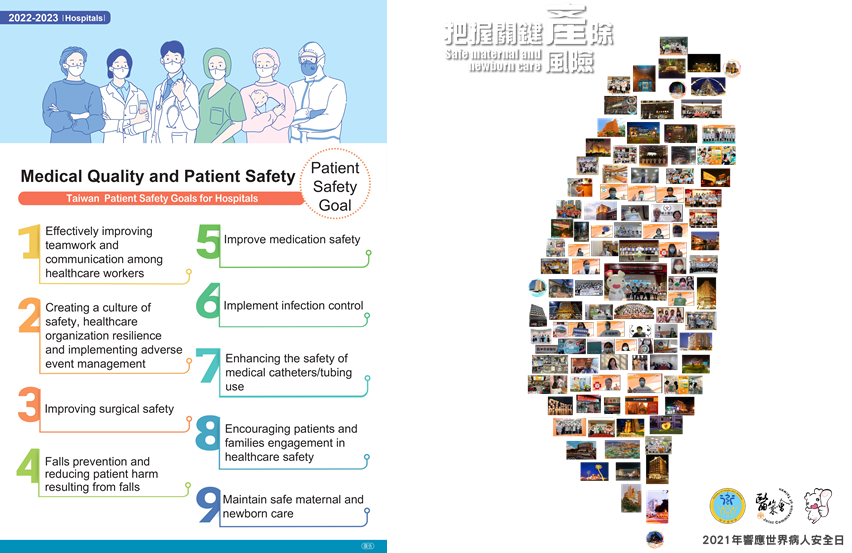Patient Safety Goals (PSGs)
The purpose of setting the annual Patient Safety Goals (PSGs) is to consolidate the consensus of the local healthcare organizations in promotion of patient safety work. The Ministry of Health and Welfare (MOHW) entrusts the JCT with a consortium to invite domestic experts in the field of patient safety to develop patient safety goals, strategies, principles, and encourage Taiwanese healthcare organizations on adoption of patient safety measures.
The main focus of PSGs is to invite healthcare organizations to work jointly on patient safety efforts, rather than setting benchmarks. Each developed PSG is accompanied by “target” goals to reach and “implementation strategies” to conduct.
The principle of setting Patient Safety Goals is bases on five aspects:
- Universality – that the goal is based on the general situation that most healthcare organizations face, rather than applicable to large hospitals.
- Feasibility – that the goal is developed on the basis of not increasing healthcare organization’s cost, and expect hospitals to implement the goals in their daily work.
- Time set – that the goal is assessed and reviewed for each target. Generally, the target goals are revised every two years based on the goal’s implementation status.
- Focused – that the hospital can select their individual patient safety goals, prioritizing the goals based on their needs and characteristics.
- Systematic – that the improvement of the patient safety work is not limited to a single department, but requires a systematic action for effective hospital wide improvement.

